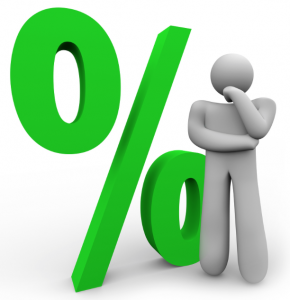Summary:
The neutral or natural interest rate is linked to potential growth.
Potential growth has fallen so has the neutral rate.
The implication is that the FOMC has made the bulk of the adjustment on its long-term Fed funds forecast.
The market recognizes that the indication by the FOMC at the end of last year that four rates hikes in 2016 may be appropriate was far from the mark. At the same time, investors are coming around to the prospects that the Fed is not one and done either.
A key issue for investors and policymakers is what is the terminal rate for Fed funds. This terminal rate is what economists call the natural or neutral interest rate. It is the rate that is consistent with full employment and capacity utilization and stable prices.
In June, the Fed’s dot-plot pointed to a long-term equilibrium rate (natural or neutral rate) of 3%. It has been steadily revised lower, which is one of the most important signals from the Federal Reserve.
The San Francisco Federal Reserve’s latest letter address this issue. The analysis is interested in what economists call r* (r-star). It is the natural rate adjusted for inflation or real rate. The current estimate is that it is near zero. It is expected to rise gradually. Historically, there is a strong statistical relationship between the growth of potential GDP and the real natural rate, of r*. A 2% growth rate of potential GDP translates to about a 1% r*.
R* closely tracks the four-quarter growth rate of potential GDP as calculated by the Congressional Budget Office. Those estimates are projected 10-years out. Using the CBO series, Kevin Lansing at the San Fran Fed calculates that, given the historical relationship, the CBO estimates point to a very gradual increase in the r* from near zero now to 1% in 2026.
If inflation is near 2% and r* is near 1%, then the long-term equilibrium rate for nominal Fed funds may be a little below 3%. On one hand, that means that the FOMC may have nearly completed its adjustment. Consider that at the start of 2012; the dot plot implied a long-term equilibrium rate of 4%.
When looking at the historical performance, Lansing notes that r* is on a downward slope, that predates the Great Financial Crisis. Real Fed funds were below what was implied by r* between Q1 2001 and Q1 2006. Some argue that it was this easy policy that fueled the housing market bubble. Others argue that the source of the bubble was not easy monetary policy by lax lending standards.
In any event, the decline in potential GDP growth has direct implications for r*. In 2006, the CBO estimated potential growth at 2.5%. Now it is 2.0%. The decline in potential growth projections fuels the secular stagnation debate. At the same time, the low levels discussed here means that in future cyclical downturns, the lower bound (zero) may be approached.
The Federal Reserve like the central banks in the UK, Australia, New Zealand and Canada, appear not to have been persuaded the negative interest rates are appropriate for them. Personnel may change, and this is not a commitment, but there seems to a clear bias against negative interest rates.
At the same time, as the Fed’s Fischer did earlier, officials are not particularly critical of the negative rate regimes by the ECB, a few other European countries, and Japan. Nor does the IMF seem particularly opposed. Some were critical that last week, Yellen stuck to the current Fed playbook of asset purchases and forward guidance. She did concede that a wider range of assets may be purchased. Suggestions like boosting the inflation target do not seem particularly helpful at this stage. Changing the Fed’s target from inflation to nominal GDP may be worth investigating, but it may require a change in the Fed’s charter.
Full story here Are you the author? Previous post See more for Next post
Tags: ECB,Interest rates,newslettersent










































